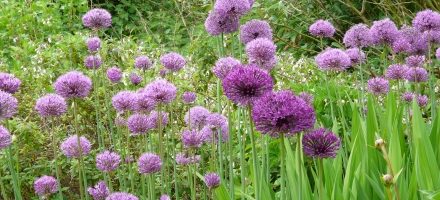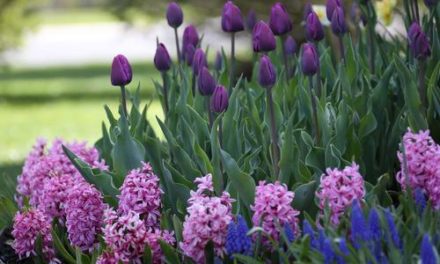Meeting:February 25th
At our February meeting, the club was delighted to welcome Michael Marriott, senior rosarian at David Austin Roses and one of the world’s most respected rose experts. Not only is Michael an international figure in the world of roses but, living locally, he has an allotment alongside several of our club members!
Michael explained that he has worked at David Austin Roses for 35 years and, in his view, roses are easy to look after:: they are robust plants; there are resistant varieties as well as disease controls; and pruning does not need to be difficult. In fact, with regard to pruning, his advice was to ‘chop away’! Whilst traditional advice is very specific about where to make a cut, he said this doesn’t matter too much – getting the shape you want is the important thing. January and February are the best times to do your pruning, but in Michael’s words, your rose won’t implode if you prune it in March!
Michael talked us through the various types of roses, identifying the advantages and shortcomings of particular roses. From the pre-15th century once flowering true ‘Old Roses’ (Gallicas, Damasks, Albas, Centifolias and Mosses), through 18th century repeat flowering Old Roses (Chinas, Portlands, Bourbons, and Hybrid Perpetuals), Floribundas, Rugosas, Climbers and Ramblers to modern shrub roses and David Austin’s English roses. Michael said that he had selected a Portland Rose, Jacques Cartier, for a large rose bed in the elegant gardens of Chiswick House in London. It is repeat flowering over a long season, disease resistant and fragrant. At the other end of the scale, he explained that the Rugosa rose, Alba, is often found in supermarket carparks because it is very tough, requires little maintenance, has a lengthy flowering period, large attractive hips and apparently even deer won’t eat it!
Michael is not a big fan of the Hybrid Tea roses, bred for the perfect form in the 20th century. They are not disease resistant, their flowers are transient, lasting only a few days, and they have no fragrance. David Austin aimed to create roses as beautiful and fragrant as the Old Roses but repeat flowering, with better disease resistance and suited to our climate. Since 1961 over 200 new David Austin English roses have been introduced. It takes about 9 years to develop a new rose, starting with over 250,000 cross-pollinated seeds (a process carried out by hand), gradually reducing down to less than 10 individual plants from which the final variety is selected. Michael shared with us some of his favourites and also enlightened us on the different fragrance types (Old Rose, tea, myrrh, fruity, musk and mixed). He had been lucky enough to get the job of spending several weeks with a scent expert, smelling all the David Austin roses in order to accurately catalogue their fragrance. Nice work if you can get it!
Michael explained that there is lots of advice on the selection and care of roses on the David Austin website and he thoroughly recommended a visit to the David Austin garden and plant centre in Shropshire which is free to enter and where the gardeners are always happy to offer their expert advice.
Jane Cross










